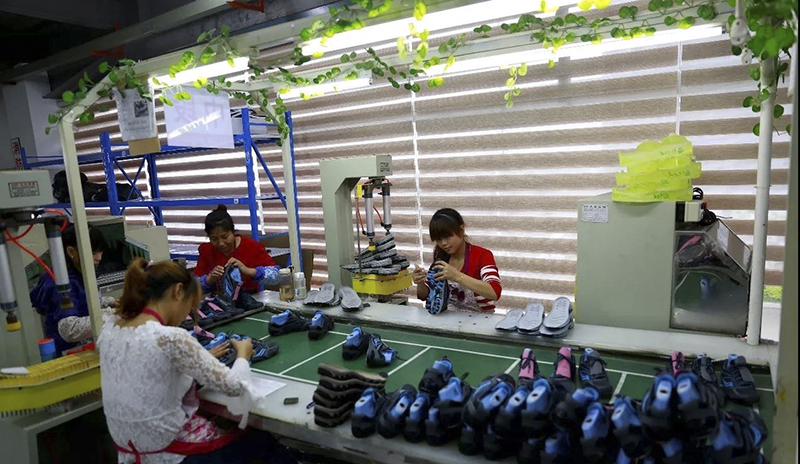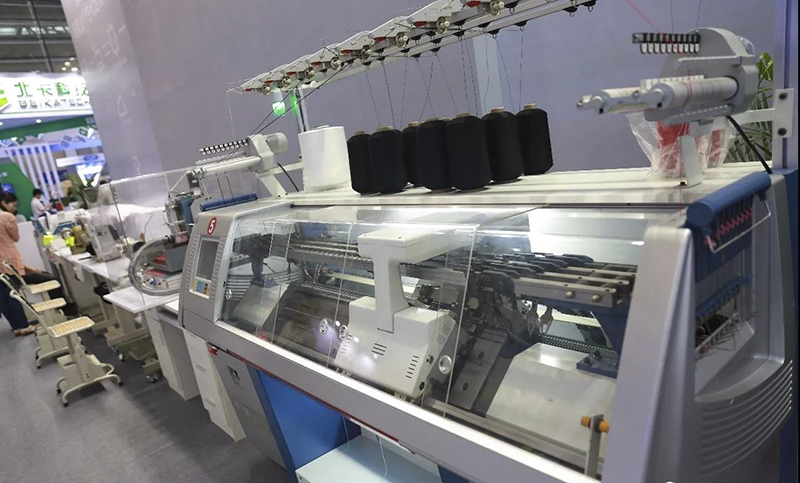In terms of total exports, the four major footwear exports in the first three quarters of 2017 have achieved different degrees of growth compared with the same period in 2016. In the first nine months of 2017, the cumulative number of leather footwear exports was 408 million kg, an increase of 6.2% year-on-year in 2016. In the first three quarters of 2017, the accumulated export volume of rubber and plastic footwear was 1.774 billion kilograms, a year-on-year increase of 9.1%. Exports of textile footwear have the largest growth rate. From January to September of 2017, this category of footwear exported a total of 900 million kilograms, a year-on-year increase of 7.9 billion kilograms, a considerable increase of 12.6%. Other footwear products experienced a decline in exports, a 6.0% year-on-year decrease in 2016. Subdivided into each quarter, in addition to other footwear exports in the second and third quarter fell 7.0%, 12.8%, and the other three categories of footwear in the first three quarters of exports have increased in varying degrees.
The Based on the above data, the number of footwear exports in China has further increased in 2017, and the development of the footwear industry is relatively good. Further from the point of view of footwear exporting regions, the leading concentration areas of China's footwear exports: Zhejiang, Guangdong, and Fujian have a clear export lead in 2017. Among them, Guangdong Guangzhou achieved growth for three consecutive quarters in rubber and footwear. In the second quarter, it reached 122.9%. In Shenzhen, Guangdong achieved a third consecutive increase in exports of leather footwear in the third quarter of 2017, including the second quarter. The growth rate reached 30.7%; in textile footwear, Fujian Putian achieved a year-on-year growth in exports in the third quarter, which increased by 22.6% in the third quarter.
Then, in the context of rising labor costs and raw material prices, what has contributed to the considerable growth in China's footwear exports in the first three quarters of this year? According to Guan Minjian, Secretary-General of the Zhejiang Leather Industry Association, this is inseparable from the effective transformation and upgrading of the shoe industry and industrial restructuring. Many domestic shoe companies responded to the requirements of the transformation and upgrading of enterprises under the reform of the supply side, and realized the goal of destocking and capacity reduction and chose to embark on the path of personalized customization. As we all know, inventory and return are the most difficult problems in the shoe and clothing industry. Therefore, the trend of customized models centered on customer needs has become more apparent. High-inventory costs and high return rates have been solved by providing products and services that consumers really need. The problems also leave more room for capital and human resources for the completion of overseas orders.

Since 2014, all kinds of shoe companies have started to test their own customized services. The domestic leather shoe brand launched the C2M high-end customized strategy for the shoe industry, connected the production line through the Internet, used computer systems for real-time data exchange, and selected the suppliers and processes to produce personalized products based on the customer's order requirements. "C2M" realizes the driving of manufacturing by user demand, which can not only eliminate the factory's inventory cost but also lower the user's purchase cost.
Combining user data with personalized customization can not only select comfortable shoes for users, but also reduce inventory for companies, reduce product return rates and achieve a win-win situation. It can thus be seen that personalized customization services will help traditional shoe companies meet the consumer demand for shoes products from more levels, thereby realizing the effect of lowering inventory and accelerating intensive production transformation and upgrading.

When more shoe companies embark on the path of personalized customization and smart manufacturing, the transformation and upgrading of China's footwear industry will be more effective, and the enhancement of export competitiveness will also be a matter of course. Not only that, when the individual customization business of Chinese shoe companies reaches maturity, it will be able to bring personalized customization concepts and services to the world in the context of economic globalization, and promote China's exports to the high-end transition.